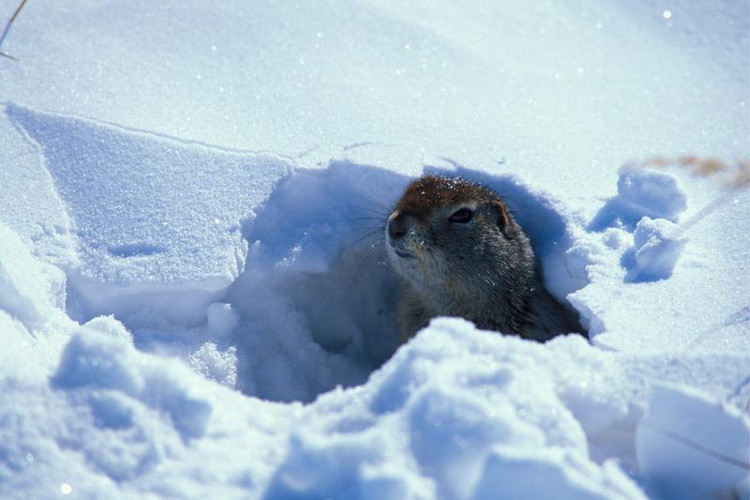All kinds of animals survive when the price is cold
Wild animals do not have amenities like clothes or heaters like humans. But they always have a way to survive in the coldest areas.
Here are some types of anti-cold in the animal world:
Winter coat
Some cold country animals have a "jacket" class to cope with the harsh weather. Like the Arctic musk, there are two layers of fur, a soft undercoat and a long coat above them, with temperatures of -46 ° C outside.

The thick fat layer is the armor plate that helps polar bears experience cold winters.
Polar bears have thick fat to keep warm. Some species have seasonal changes in fur, like the white-tailed deer from the autumn to prepare for the cold winter.
Other cold species such as snow fox, white belly, ecmin mink or Arctic rabbit can change the coat color to blend with the snow color in winter.
This mechanism is effective if the weather changes regularly over the years. But if snow falls later or melts sooner due to climate change, these animals will be more difficult.
A 2016 report showed that the change in the color of Lepus americanus 's rabbits did not match the environmental conditions, reducing the survival rate of this species by 7%.
Self-freezing
Forest frogs, distributed from the southeastern United States to the Arctic can bury themselves under the leaves and freeze their bodies. When the weather is warm again, the ice around this frog will melt without causing any bad consequences.

Arctic ground squirrels can lower body temperature below freezing while hibernating.
Forest frogs have a special freezing mechanism. They can survive even if the ice forms on the body's stool thanks to substances such as glucose or urea, which protect the cell from damage.
Some lizards, turtles, insects, even at least one mammal can do this.
Arctic ground squirrels can lower body temperature below freezing while hibernating. This is based on a mechanism called "supercooled", when the body temperature can be below 0 degrees C without ice formation.
Another super-cold, super-cold, is the Alaskan red bark . In laboratory conditions, this species can survive when the temperature drops to -150 degrees Celsius.
Warm feet
Flamingos are often seen in the wet tropics. But three American pink flamingos, Chilean flamingos, Andes flamingos and pink cranes James, live in frozen lakes on high mountains.

The "supermodel" of the pink color has the ability to reduce the body's heat loss.
To keep the legs long, thin and warm, the flamingos have a reverse blood circulation system. Here, blood from the legs back to the body will be warmed by blood moving from the body to the feet. This reduces the heat loss of the whole body.
Antarctic penguins also have a similar mechanism to endure cold, besides thick fat and thick hair.
Change eye color
A 2011 study found that reindeer can change the texture and color of seasonal eyes in the Arctic. From the North Pole upwards, summer sunlight will be replaced by a 24-hour night. in winter.

To adapt to the extreme weather in the Arctic, reindeer must change eye color.
Behind the reindeer eye retina there is a layer of tapetum lucidum cells that help them adapt to seasonal light and shadow conditions. When exposed to sunlight in the summer, this layer of cells turns yellow. In winter, the cell layer turns dark green.
Scientists believe that reindeer can see ultraviolet rays. This helps them detect polar bears, increasing their ability to survive in the winter.
- The terrible cold price covers the United States and Canada
- The ability to survive if humans returned 2.5 million years ago
- Decipher the greatness of cold native animals
- Deep cold lasts until the end of January
- What is cold-blooded animals? Basic information you need to know
- Animal 'suffering' after hibernation
- What would happen if humans were ... 'cold-blooded animals'?
- 7 animals are cold resistant under 0 ° C best on the planet
- Can a flu virus survive in a cold country?
- Deep cold, many items race to increase prices
- Cold-blooded animals are able to adapt quickly to climate change
- Why are some animals still alive even if the blood freezes?
 Animal 'suffering' after hibernation
Animal 'suffering' after hibernation Why do goats climb well?
Why do goats climb well? Scientists were surprised to see chimpanzees eating turtles
Scientists were surprised to see chimpanzees eating turtles Giant catfish died deadly due to drought in Thailand
Giant catfish died deadly due to drought in Thailand